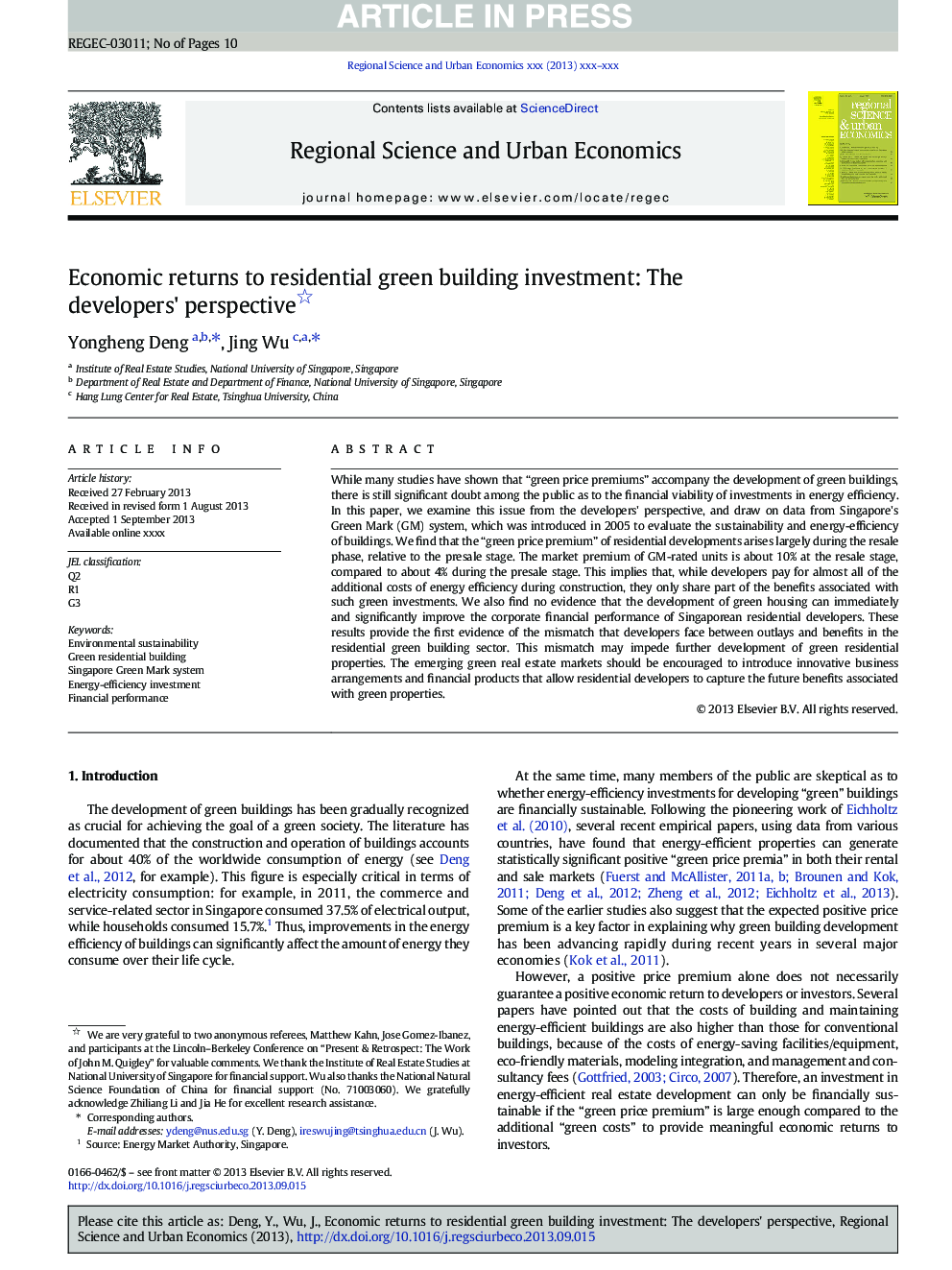| Article ID | Journal | Published Year | Pages | File Type |
|---|---|---|---|---|
| 7383966 | Regional Science and Urban Economics | 2014 | 10 Pages |
Abstract
While many studies have shown that “green price premiums” accompany the development of green buildings, there is still significant doubt among the public as to the financial viability of investments in energy efficiency. In this paper, we examine this issue from the developers' perspective, and draw on data from Singapore's Green Mark (GM) system, which was introduced in 2005 to evaluate the sustainability and energy-efficiency of buildings. We find that the “green price premium” of residential developments arises largely during the resale phase, relative to the presale stage. The market premium of GM-rated units is about 10% at the resale stage, compared to about 4% during the presale stage. This implies that, while developers pay for almost all of the additional costs of energy efficiency during construction, they only share part of the benefits associated with such green investments. We also find no evidence that the development of green housing can immediately and significantly improve the corporate financial performance of Singaporean residential developers. These results provide the first evidence of the mismatch that developers face between outlays and benefits in the residential green building sector. This mismatch may impede further development of green residential properties. The emerging green real estate markets should be encouraged to introduce innovative business arrangements and financial products that allow residential developers to capture the future benefits associated with green properties.
Keywords
Related Topics
Social Sciences and Humanities
Economics, Econometrics and Finance
Economics and Econometrics
Authors
Yongheng Deng, Jing Wu,
